
When we talk about legacies in sports, few names resonate with the power and permanence of LeBron Raymone James Sr. The man simply known as ‘King James’ hasn’t just played the game; he’s redefined it, etched his name into the record books, and accumulated a ‘vault’ of accomplishments that would make any sports enthusiast’s jaw drop. This isn’t just a collection of stats; it’s a testament to unparalleled dedication, skill, and an unwavering drive for greatness.
Forget about dusty old trading cards, though they’re certainly a part of the collector’s world; LeBron’s true vault is comprised of the moments, the seasons, the pivotal decisions, and the sheer dominance that have shaped basketball for two decades. We’re talking about a career so rich with narrative that each chapter feels like a prized possession, a mint-condition gem reflecting a different facet of his reign. It’s a journey from the humble streets of Akron to the brightest lights of the NBA, filled with triumphs, controversies, and defining performances.
Join us now as we open the metaphorical vault, diving deep into the early, foundational ‘items’ that make up the King’s unrivaled collection. We’ll explore the formative years, the audacious entry into the NBA, his meteoric rise to superstardom, and the seismic shift that sent shockwaves across the sports landscape, forever altering how we view player power and team building. Get ready to explore the story of a legend, piece by unforgettable piece.

1. **From Akron’s Courts to National Stardom: The High School Phenom Years**Before the NBA championships, the MVP awards, and the record books, LeBron James was a kid from Akron, Ohio, whose early life was marked by struggle. Born on December 30, 1984, to Gloria Marie James, who was only 16, his father, Anthony McClelland, was absent due to an extensive criminal record. Life was a constant battle, moving from one apartment to another in Akron’s tougher neighborhoods as his mother worked tirelessly to find stable employment. It was a tough start, but one that undeniably forged an inner fire that would define his future.
A pivotal change occurred when Gloria, realizing her son needed a more stable environment, allowed him to live with the family of Frank Walker, a local youth football coach. It was Walker who first introduced nine-year-old LeBron to organized basketball, setting him on a path that would change his life, and the sport, forever. Soon, he was playing Amateur Athletic Union (AAU) basketball for the Northeast Ohio Shooting Stars alongside his friends Sian Cotton, Dru Joyce III, and Willie McGee—a quartet that dubbed themselves the “Fab Four” and made a pact to attend high school together.
Their decision to attend St. Vincent–St. Mary High School, a private Catholic school predominantly white, stirred local controversy, but it didn’t hinder James’s ascent. As a 6-foot-2-inch freshman, he averaged 18 points and 6.2 rebounds, leading the Fighting Irish to an undefeated 27–0 season and a Division III state title. By his sophomore year, he was averaging 25.3 points, 7.4 rebounds, 5.5 assists, and 3.7 steals, guiding the team to another state championship and becoming the first sophomore to be named Ohio Mr. Basketball and selected to the USA Today All-USA First Team. Demand to see him play was so high that some home games were moved to the University of Akron’s 5,492-seat Rhodes Arena.
His junior year solidified his national reputation, featuring in a Slam magazine article that lauded him as “[possibly] the best high school basketball player in America right now” and gracing the cover of Sports Illustrated—the first high school basketball underclassman to do so. With averages of 28 points, 8.9 rebounds, 6 assists, and 3 steals, he again earned Ohio Mr. Basketball and USA Today All-USA First Team honors, plus became the first junior to be named male basketball Gatorade National Player of the Year. Throughout his senior year, St. Vincent–St. Mary traveled nationally, even having games televised on ESPN2, with James averaging 30.4 points, 9.7 rebounds, 4.9 assists, and 2.9 steals, earning his third consecutive Ohio Mr. Basketball and second Gatorade National Player of the Year awards.
However, his senior year also brought controversy. He accepted a Hummer H2 from his mother for his 18th birthday, which prompted an OHSAA investigation, though he was cleared since it was from a family member. Later, accepting two throwback jerseys worth $845 for posing for pictures led to a temporary stripping of his eligibility. The penalty was reduced to a two-game suspension, allowing him to return and score a career-high 52 points in his first game back, leading the Irish to their third division title in four years. He even excelled in football, playing wide receiver and earning all-state honors, with some analysts believing he could have played in the NFL before a wrist injury ended his gridiron career.

2. **The Crowned Rookie: Making an Unprecedented NBA Entrance (2003-2004)**The anticipation was palpable, a roar building from Cleveland, Ohio, the city that would soon become synonymous with its new king. In 2003, the Cleveland Cavaliers, holding the first overall pick in the NBA draft, did the expected, selecting their hometown hero, LeBron James. This wasn’t just a draft pick; it was the start of an era, a moment that promised to reshape a franchise and eventually, the entire league. LeBron, in a symbolic nod to the legend who inspired a generation, chose the iconic jersey number 23.
His professional debut was nothing short of historic. Facing the Sacramento Kings, James poured in 25 points, setting an NBA record for the most points scored by a prep-to-pro player in his very first game. It was an instant affirmation of the hype, a clear signal that this 18-year-old was ready for the big stage. His all-around game was immediately apparent, showcasing the rare blend of scoring, passing, and rebounding that would become his trademark.
By the conclusion of the 2003–2004 season, James had already carved out a significant place in history. He became the first Cavalier ever to receive the NBA Rookie of the Year Award, a fitting recognition of his instant impact. More impressively, he was only the third player in league history to average at least 20 points, five rebounds, and five assists per game as a rookie, joining an elite club that underscored his unique versatility.
Despite James’s individual brilliance and an 18-game improvement over the previous year, the Cavaliers finished the season 35–47, ultimately falling short of a playoff berth. While the team success wasn’t immediate, the foundation had been laid. The city, and indeed the league, had seen a glimpse of the future, a future where ‘King James’ would not just participate but dominate, collecting accolades and turning heads with every gravity-defying dunk and pinpoint pass. This rookie season was the first precious gem in his professional career vault.
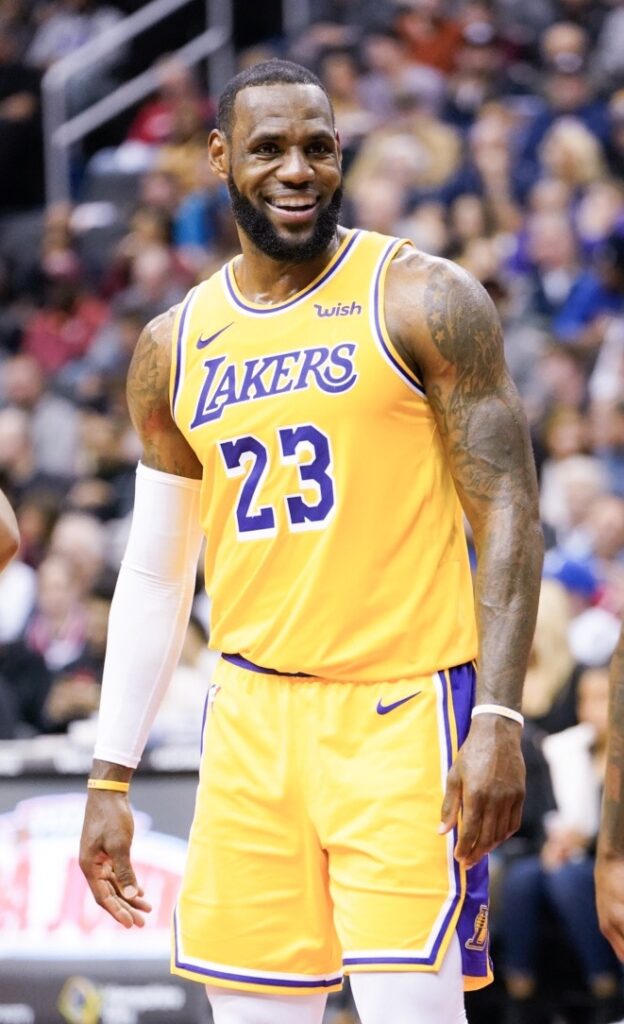
3. **Ascension to Stardom: First All-Star and Record-Breaking Nights (2004-2006)**The trajectory of LeBron James’s career was only pointing upwards, and the 2004–2005 season saw him take another significant leap into the realm of NBA superstardom. His talent was undeniable, leading to his first NBA All-Star Game selection, where he contributed 13 points, 8 rebounds, and 6 assists in a winning effort for the Eastern Conference. It was a clear sign that he belonged among the league’s elite, a prodigy fulfilling every ounce of his immense potential.
Around the league, coaches and pundits alike were left marveling at his rapid development. Denver Nuggets coach George Karl famously told Sports Illustrated: “It’s weird talking about a 20-year-old kid being a great player, but he is a great player … He’s the exception to almost every rule.” Such praise from seasoned observers underscored the unprecedented nature of James’s talent at such a young age. He wasn’t just good; he was exceptional, a force defying conventional timelines of development.
On March 20, 2005, James delivered a performance that etched his name deeper into Cavaliers history, scoring a staggering 56 points against the Toronto Raptors. This Herculean effort set a new single-game points record for Cleveland, showcasing his ability to take over a game offensively when needed. By the end of the season, his consistent brilliance earned him a spot on his first All-NBA Team, a testament to his burgeoning dominance.
Despite a promising 30–20 start to the year, the Cavaliers ultimately finished 42–40, once again missing the playoffs. However, the pieces were clearly falling into place, and James was undeniably the centerpiece. In the 2006 offseason, the Cavaliers secured their franchise player, signing him to a three-year, $60 million extension with a fourth-year player option, strategically aligning his potential free agency with fellow 2003 draft class members Dwyane Wade and Chris Bosh.
The 2006 All-Star Game further cemented his status, as James led the East to victory with 29 points and was named the NBA All-Star Game Most Valuable Player. He also finished a remarkable second in the overall NBA Most Valuable Player Award voting to Steve Nash, signaling his emergence as a legitimate league MVP candidate. Under James’s dynamic leadership, the Cavaliers finally qualified for the playoffs for the first time since 1998, a monumental achievement for the franchise and a significant milestone for the young superstar. In his postseason debut, James recorded a triple-double in a winning effort over the Washington Wizards, and he dramatically sealed Games 3 and 5 with game-winning shots. Though Cleveland would be ousted by the Detroit Pistons in the second round, this period marked his undeniable rise.

4. **The Eastern King: First Finals Appearance and Scoring Title (2006-2008)**The 2006–2007 season saw the Cavaliers continue their upward trajectory, finishing with 50 wins for the second consecutive year and entering the playoffs as the #2-seed in the Eastern Conference. The stage was set for LeBron to truly assert his dominance, and he did so with a series of performances that defied belief. After dispatching the Washington Wizards and New Jersey Nets in the first two rounds, the Cavaliers found themselves in a highly anticipated Eastern Conference Finals clash with the formidable Detroit Pistons.
It was in Game 5 of that series that LeBron James delivered one of the most iconic and legendary playoff performances of all time. He exploded for 48 points, adding nine rebounds and seven assists, but it was *how* he scored those points that captivated the basketball world. James remarkably scored 29 of Cleveland’s last 30 points, including an astonishing 25 consecutive points, culminating in a game-winning layup with two seconds left, securing a thrilling 109–107 double-overtime victory. Play-by-play announcer Marv Albert declared it “one of the greatest moments in postseason history,” while color commentator Steve Kerr described it as “[Michael] Jordan-esque.” Years later, ESPN would rank this performance as the fourth greatest in modern NBA playoff history, a true testament to its unforgettable impact.
The Cavaliers, riding the momentum of James’s heroics, went on to win Game 6, clinching their first-ever Eastern Conference championship and earning a coveted spot in the NBA Finals. Their opponents were the battle-tested San Antonio Spurs, coached by Gregg Popovich and featuring prime talents like Tim Duncan, Tony Parker, Manu Ginóbili, and Bruce Bowen. The Spurs’ defense was laser-focused on stopping James, who, at this point, did not yet possess a reliable jump shot and lacked other significant offensive weapons on his team.
LeBron struggled against San Antonio’s suffocating zone defense, averaging 22 points, 7.0 rebounds, and 6.8 assists per game on just 35.6 percent shooting, as Cleveland was eliminated in a four-game sweep. Despite the Finals loss, the journey itself was a monumental achievement. The 2007-2008 season saw him further refine his individual game, becoming an All-Star Game MVP for the second time with a 27-point, eight-rebound, and nine-assist performance. He also surpassed Brad Daugherty as the Cavaliers’ all-time leading scorer, doing so in over 100 fewer games. James’s 30 points per game also earned him his first scoring title, a clear indicator of his elite offensive prowess. Despite these personal milestones, Cleveland’s record dipped to 45–37, and they were eliminated in seven games by the eventual-champion Boston Celtics in a memorable second-round “shootout” where James scored 45 points against Paul Pierce’s 41.
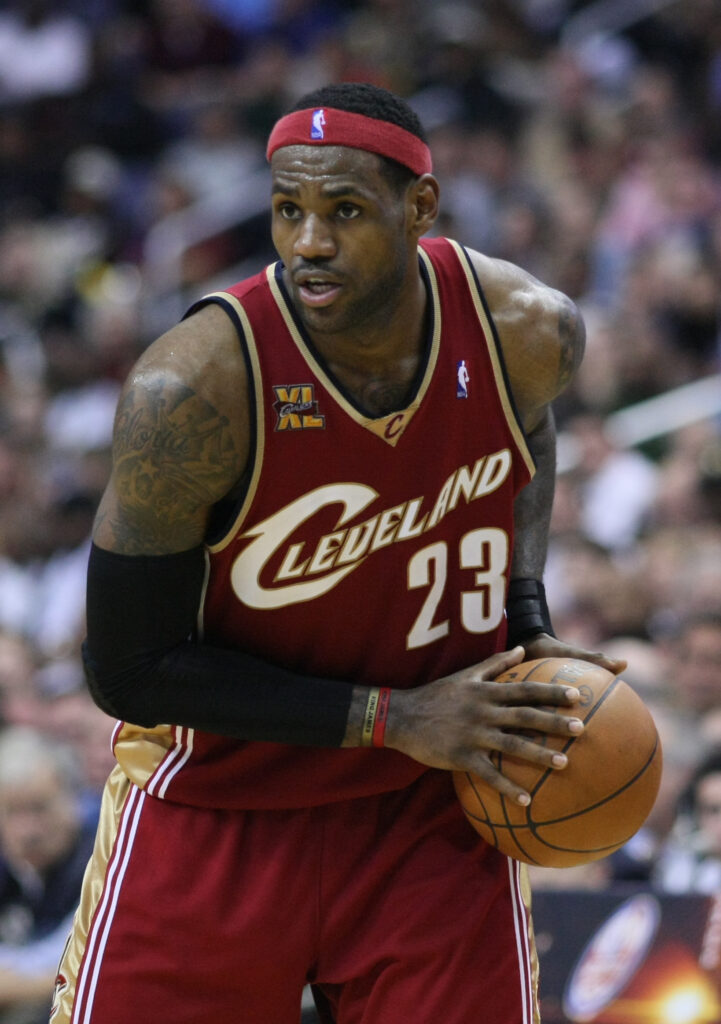
5. **Reaching the Apex: Back-to-Back MVP Awards and Defensive Dominance (2008-2010)**The years leading up to “The Decision” were arguably some of LeBron James’s most statistically dominant and individually accomplished. The 2008–2009 season saw him not only continue his offensive brilliance but also assert himself as an elite defender. He finished a close second in the NBA Defensive Player of the Year Award voting and made his first NBA All-Defensive Team, tallying 23 signature chase-down blocks and a career-high 93 total blocks. His all-around impact was profound, as he became only the fourth postmerger player to lead his team in points, rebounds, assists, steals, and blocks in a single season – a truly rare feat that showcases his comprehensive skill set.
With James at the helm and the acquisition of All-Star guard Mo Williams, Cleveland experienced unprecedented regular-season success, posting a franchise-record 66–16 record and falling just one game short of matching the best home record in league history. This incredible team performance was rightfully capped by James earning his first NBA MVP Award, becoming the first Cavalier to ever do so. ESPN’s John Hollinger famously reflected on his performance, writing: “He’s having what is arguably the greatest individual season in history, and it’s time we gave him his due for it.”
In the playoffs, the Cavaliers swept through the Detroit Pistons and the Atlanta Hawks with ease, setting up an Eastern Conference Finals showdown with the Orlando Magic. In a Game 1 loss, James delivered a sensational 49 points on 66 percent shooting. He then hit a dramatic game-winner in Game 2 to tie the series at 1–1, thrilling fans and reminding everyone of his clutch capabilities. However, Cleveland ultimately lost the series in six games, and a controversial moment saw James immediately leave the floor without shaking hands with his opponents, an act many media members viewed as unsportsmanlike. Despite the team’s exit, James’s individual output was staggering, averaging 38.5 points, 8.3 rebounds, and 8.0 assists per game for the series, and finishing the postseason with a career playoff-high 35.3 points per game.
The 2009–10 season saw LeBron once again lead the charge, even being forced into a temporary point guard role due to a string of injuries in the Cavaliers’ backcourt. Despite this added responsibility, Cleveland lost no momentum, finishing the year with the best record in the league for the second consecutive season. James, playing only 39 minutes per game, managed to increase his statistical production and was deservedly awarded his second consecutive NBA MVP Award. The playoffs began with Cleveland advancing past the Chicago Bulls, leading to a second-round matchup with the Boston Celtics. This series, however, proved to be a significant turning point, as James faced heavy criticism for a lackluster Game 5 performance, shooting only 20 percent on 14 shots and scoring 15 points in a historic franchise loss. He walked off the court to boos from the home crowd, and the Cavaliers were eliminated in Game 6, despite James posting 27 points, 19 rebounds, and 10 assists in the losing effort.
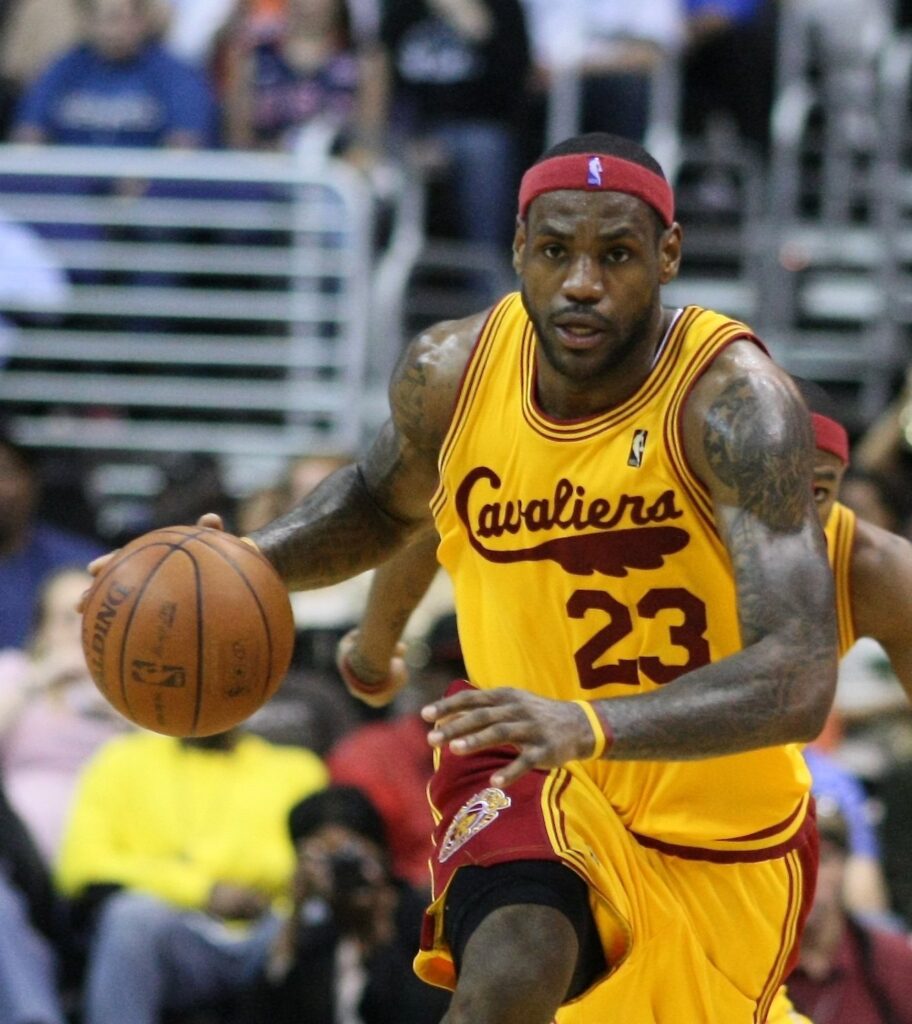
6. **The Decision: A Seismographic Shift in the NBA Landscape (2010)**July 1, 2010, marked the beginning of one of the most talked-about free agency periods in sports history. LeBron James, having completed his first stint with the Cavaliers with averages of 27.8 points, 7.0 rebounds, 7.0 assists, and 1.7 steals per game, became an unrestricted free agent, setting off a scramble among multiple NBA teams. The Bulls, Los Angeles Clippers, Miami Heat, New York Knicks, New Jersey Nets, and his hometown Cavaliers all vied for his unparalleled talents. The anticipation reached a fever pitch, culminating in an unprecedented live ESPN special titled “The Decision” on July 8.
Broadcast from the Boys & Girls Club of Greenwich, Connecticut, the telecast raised $2.5 million for charity, with an additional $3.5 million from advertising revenue donated to other charitable organizations. However, the philanthropic intentions were largely overshadowed by the shocking announcement: James would sign with the Miami Heat. This wasn’t a solo act; the day before, fellow free agents Chris Bosh and Dwyane Wade had also announced their intentions to sign with Miami, confirming widespread reports that the trio had discussed their upcoming 2010 free agencies back in 2006.
James’s motivation was clear: he decided to join Bosh and Wade in part to shoulder less of the offensive load, believing that improved teammates would provide him a better chance of winning an NBA championship than if he had remained in Cleveland. Heat president Pat Riley played a crucial role in selling James on the vision of playing alongside these two stars. James even envisioned becoming the first player since Oscar Robertson to average a triple-double in a season, unburdened by carrying the entire offensive weight.
Upon leaving the Cavaliers, James faced an intense firestorm of criticism from sports analysts, executives, fans, and both current and former players. “The Decision” itself was scrutinized as unnecessary and unprofessional, with even the teams courting him unaware of his choice until moments before the live show. Cavaliers owner Dan Gilbert published an open letter aggressively denouncing James’s actions, and angry fans recorded videos of themselves burning his jersey, symbolizing a betrayal.
Even NBA legends like Michael Jordan and Magic Johnson were critical, condemning him for forming a “superteam” in Miami rather than attempting to win a championship in Cleveland. Jordan, however, did acknowledge that players’ options in 2010 were far more expansive than those available in his era. Some commentators, however, defended James, pointing to the Cavaliers’ inability to build a strong supporting cast around him, arguing that other NBA greats had benefited from talented teammates like Johnson with Kareem Abdul-Jabbar, Bird with McHale and Parish, and Jordan with Scottie Pippen. James further fueled the controversy by claiming in a September interview with CNN that race might have been a factor in the backlash. As a result, James, once a beloved figure, quickly gained a reputation as one of America’s most disliked athletes, with the phrase “taking my talents to South Beach” becoming a mocking punch line. In retrospect, James himself has expressed some regret over his handling of “The Decision,” acknowledging the profound impact it had.
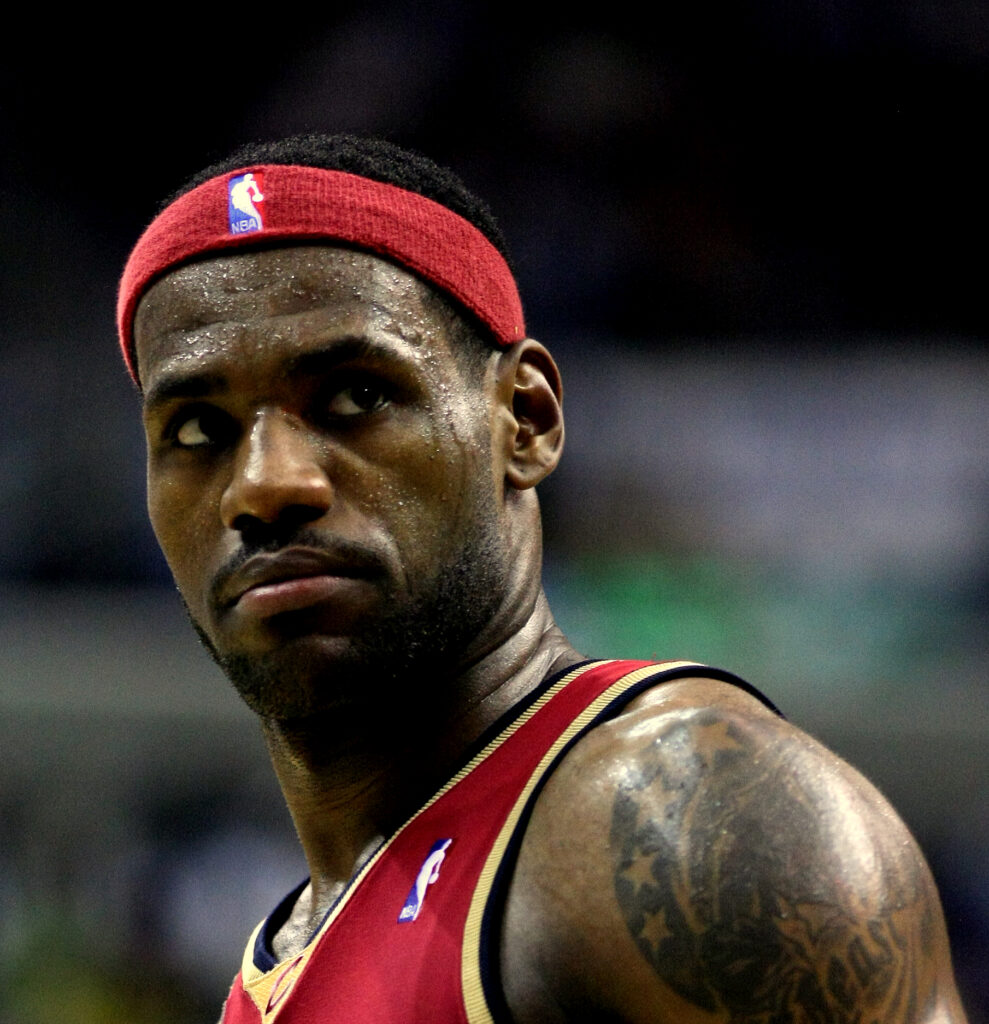
7. **The Villain’s Crucible: Scrutiny and the First Miami Finals Loss (2010-2011)**With “The Decision” behind him, LeBron James officially signed a 6-year, $110 million contract with the Heat on July 10, 2010, via a sign-and-trade deal that sent draft picks back to the Cavaliers. This marked the creation of the first player-created NBA superteam and made James only the third reigning MVP to change teams since Moses Malone in 1982. In a move of respect for Michael Jordan, whose number 23 was retired in Miami, James switched his jersey to number 6, fulfilling a declaration from the previous season that he felt number 23 should be retired league-wide in Jordan’s honor.
The Heat threw a lavish welcome party for their new “Big Three” at the American Airlines Arena, an event that took on the atmosphere of a rock concert. During the spectacle, James confidently predicted a dynasty for the Heat, alluding to multiple championships. Outside of Miami, however, the lavish display was not well-received, further fueling the negative public perception that had already taken root. The media and opposing fanbases eagerly embraced the narrative of James and the Heat as villains throughout the 2010–11 season.
To begin the year, the Heat struggled to adjust to these new circumstances, going only 9–8 after 17 games, a far cry from the dynasty that had been promised. James later admitted that the constant negativity surrounding the team caused him to play with an angrier demeanor than in previous years. A highly anticipated moment arrived on December 2 when James faced the Cleveland Cavaliers in Cleveland for the first time since his departure. He scored 38 points, leading Miami to a victory, but was met with a chorus of boos every time he touched the ball, a stark and bitter welcome home.
Despite the early struggles and intense scrutiny, the Heat eventually turned their season around, finishing as the East’s second seed. In the Eastern Conference Semifinals, James and his teammates found themselves matched up with their familiar rivals, the Boston Celtics, for the second consecutive year. In Game 5, he delivered a clutch performance, scoring Miami’s last 10 points to help seal a series-clinching win. After the final buzzer, James famously knelt on the court in an emotional moment, later telling reporters that it was an extremely personal victory for him and the team.
The Heat ultimately advanced to the NBA Finals, where they faced the Dallas Mavericks. This series, however, would become a profound crucible for James. Miami lost to Dallas in six games, and James received the brunt of the criticism for the defeat, particularly for his struggles in the fourth quarter, where he averaged only three points in the series. He scored a mere eight points in Game 4, a game Miami lost by just three points, further fueling the narrative of his inability to perform in the clutch. His Finals scoring average of 17.8 points per game represented an 8.9-point drop from his regular season average, which was the largest point drop-off in league history. This challenging season and Finals loss served as a critical, albeit painful, lesson for the King, forcing him to re-evaluate his approach and ultimately shaping the champion he would become.”
, “_words_section1”: “1948

8. **Back-to-Back Championships in Miami: The King Finds His Crown (2011-2013)**After the profound crucible of his first season in Miami, LeBron James, ever the student of the game, used the extended offseason of the 2011–2012 lockout to refine his craft. He famously sought out NBA legend Hakeem Olajuwon to improve his post-up game, a pivotal development that would unlock new dimensions in his offensive arsenal. More importantly, the humbling experience of losing to the Dallas Mavericks in the Finals inspired James to shed the ‘villain’ persona and rediscover the sheer joy of playing basketball. This renewed mindset, combined with his already massive skill set, propelled Miami to a franchise-best 18–6 start to the year. James was rightfully named MVP for the third time, signaling his resurgence and focus.
The path to a championship, however, was still fraught with challenges. In the second round of the playoffs, the Heat temporarily lost Chris Bosh to an abdominal injury, finding themselves trailing the Indiana Pacers 2–1 in a tense series. True to his evolving leadership, James responded with an utterly dominant performance in Game 4, erupting for 40 points, 18 rebounds, and nine assists to help even the series. To compensate for Bosh’s absence, the Heat strategically embraced a small-ball lineup with James playing power forward, a tactical shift they maintained even after Bosh’s return for the Eastern Conference Finals against the familiar Boston Celtics. Facing elimination in Game 6, James delivered what *The New York Times* called a ‘career-defining performance,’ tallying an astounding 45 points and 15 rebounds to lead Miami to a victory that echoed through sports history.
The Heat ultimately won Game 7 against the Celtics, advancing to the NBA Finals for a highly anticipated matchup with the Oklahoma City Thunder and James’ budding rival Kevin Durant. In a critical Game 4 of the series, James hit a clutch three-pointer to give Miami a crucial lead, helping them secure the win despite battling leg cramps. This momentous run culminated in Game 5, where James registered a triple-double as Miami defeated Oklahoma City, securing their second-ever franchise championship and, more significantly, LeBron James’s first NBA title. He was unanimously voted the Bill Russell NBA Finals Most Valuable Player, averaging 28.6 points, 10.2 rebounds, and 7.4 assists per game. His full postseason, where he averaged 30.3 points, 9.7 rebounds, and 5.6 assists, was later ranked by ESPN as the second-best in modern NBA history.
Riding the momentum of his first championship, James entered the 2012–13 season with even greater confidence and mastery of his game. In February, he delivered a ‘month for the ages,’ as *Sports Illustrated* described it, averaging 29.7 points and 7.8 assists per game while setting multiple shooting efficiency records. That same month, the Heat embarked on an incredible 27-game winning streak, the third longest in NBA history, showcasing their dominance. Miami finished the year with a franchise and league-best 66–16 record, a testament to James’s leadership. He was named MVP for the fourth time, coming just one vote shy of becoming the first player in NBA history to win the award unanimously.
In the Eastern Conference Finals, James once again demonstrated his clutch gene, scoring a buzzer-beating layup in Game 1 to give Miami a one-point victory against the Indiana Pacers. His supporting cast struggled significantly throughout the series, prompting James to openly compare his increased scoring responsibilities to those of his ‘Cleveland days.’ Despite these individual burdens, the Heat advanced to the Finals for a highly anticipated rematch with the San Antonio Spurs, a redemption opportunity for James six years after his first Finals appearance. After falling behind 2–3, largely due to initial criticism for his perceived lack of aggressiveness and poor shot selection, James again rallied the team. In Game 6, he recorded his second triple-double of the series, including a scorching 16 fourth-quarter points, leading the Heat to a dramatic comeback victory. In Game 7, he tied the Finals record for most points scored in a Game 7 victory, leading Miami over San Antonio with an emphatic 37 points, securing his second consecutive championship and his second Finals MVP award, averaging 25.3 points, 10.9 rebounds, 7.0 assists, and 2.3 steals per game for the championship round.
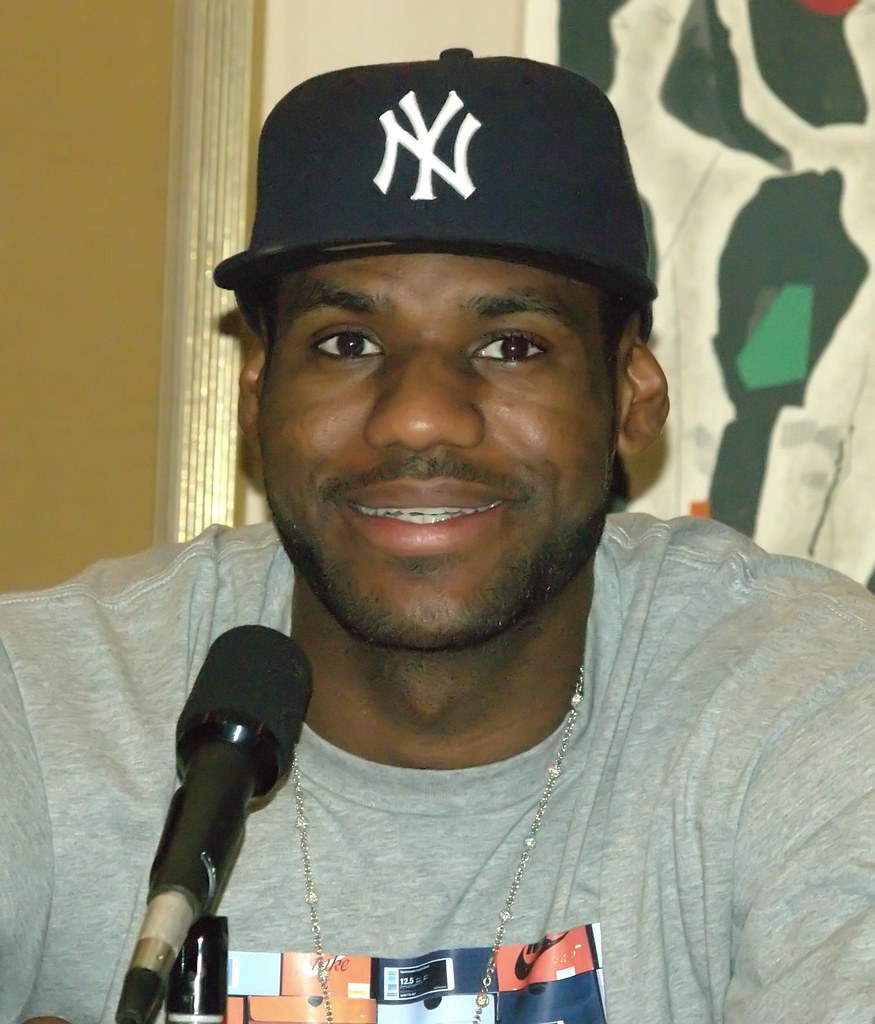
9. **Final Season in Miami and The Homecoming: A Resounding Return (2013-2014 & 2014-2015 Pre-Season)**
The 2013–2014 season saw LeBron James continue to etch his name into the record books with Miami. On March 3, he delivered a performance for the ages, scoring a career-high and franchise-record 61 points in a game against the Charlotte Bobcats. This wasn’t just a scoring outburst; he converted his first eight three-point field goal attempts through three quarters, setting a new record for the most three-pointers made in a 60-point game, all while wearing a mask. Throughout the year, James was a constant force for a Heat roster plagued by injuries, forcing them to use 20 different starting lineups. His individual brilliance carried the team, highlighting his unwavering impact.
In the second round of the playoffs, James once again tied a career postseason-high by scoring 49 points in Game 4 against the Brooklyn Nets, showcasing his ability to elevate his game when it mattered most. Miami’s consistent success under his leadership earned them their fourth consecutive Finals berth, a remarkable achievement that placed them among only four teams in NBA history to accomplish such a feat. However, the Finals rematch against the San Antonio Spurs proved challenging. In Game 1, James was forced to miss most of the fourth quarter due to debilitating leg cramps, a moment that contributed to the Spurs taking an early series lead.
Despite his heroic efforts in Game 2, where he led the Heat to a series-tying victory with 35 points on an impressive 64 percent shooting rate, the Spurs proved too strong. San Antonio ultimately eliminated the Heat in five games, effectively ending Miami’s quest for a historic three-peat. For the Finals, James averaged 28.2 points, 7.8 rebounds, and 2.0 steals per game, demonstrating his all-around impact even in defeat. The loss marked the end of an era in South Beach, setting the stage for one of the most significant moves in league history.
On June 25, 2014, James opted out of his contract with the Heat, and by July 1, he was officially an unrestricted free agent, once again sending ripples of anticipation across the NBA landscape. However, this time, the narrative was entirely different. On July 11, James revealed his intentions in a heartfelt first-person essay published in *Sports Illustrated*, announcing his decision to return to the Cleveland Cavaliers. In stark contrast to the widespread criticism and controversy that surrounded ‘The Decision’ in 2010, his announcement to return to his hometown team was universally well received, eliciting an outpouring of joy and relief from fans and analysts alike. It was a true homecoming, a chance to mend fences and fulfill a long-awaited promise.
The very next day, James officially signed a two-year, $42.1 million contract with the Cavaliers, marking his highly anticipated return to a team that had compiled a league-worst 97–215 record in the four seasons following his departure. This wasn’t just about bringing back a star; it was about injecting hope and championship aspirations into a franchise that had languished. A month after James’s signing, the Cavaliers further solidified their roster by acquiring All-Star power forward Kevin Love from the Minnesota Timberwolves, effectively forming a new ‘Big Three’ alongside James and promising young guard Kyrie Irving. In a symbolic return, James also switched back to his iconic No. 23 jersey upon rejoining Cleveland, signaling a fresh start and renewed commitment to his roots.
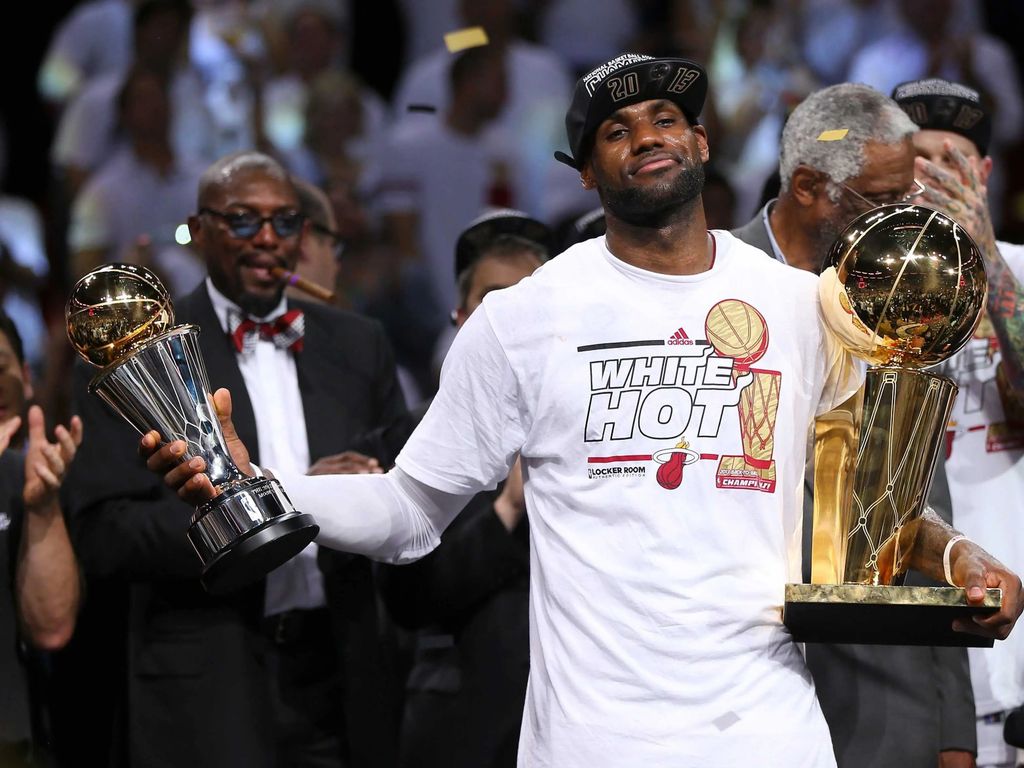
10. **Ending Cleveland’s Championship Drought: The Promise Fulfilled (2014-2016)**The 2014–2015 season, LeBron’s first back in Cleveland, began with high expectations, but also with challenges. In January, James missed two weeks due to left knee and lower back strains, which, at the time, represented the longest stretch of missed games in his career. It was a rare moment of vulnerability for the ironman, but he returned with renewed vigor. In the second round of the playoffs, he reminded everyone of his clutch capabilities, hitting a dramatic baseline jumper at the buzzer to give Cleveland a crucial 2–2 series tie with the Chicago Bulls, a play that instantly became a highlight reel staple.
The Cavaliers, under James’s leadership, stormed through the Eastern Conference, defeating the Atlanta Hawks to advance to the NBA Finals. This marked James’s fifth consecutive Finals appearance, making him the first player since the 1960s to achieve such a remarkable feat. However, the Finals against the Golden State Warriors were marred by unfortunate circumstances. Both Kyrie Irving and Kevin Love were sidelined due to injury for most of the series, placing an immense offensive burden squarely on James’s shoulders. Despite his heroic efforts and leading the Cavaliers to an improbable 2–1 series lead, they ultimately lost in six games. Even in defeat, James received serious consideration for the Finals MVP Award, averaging a staggering 35.8 points, 13.3 rebounds, and 8.8 assists per game, a testament to his individual brilliance against overwhelming odds.
In the 2015 offseason, James opted out of his $21.5 million player option but quickly re-signed on a two-year, $46.9 million contract, again including a second-year player option. The 2015–16 season wasn’t without its internal turmoil; James faced criticism for his perceived role in several off-court controversies, most notably the midseason firing of Cavaliers coach David Blatt. Despite these distractions and the swirling narratives, Cleveland, fueled by James’s relentless drive, finished the year with an impressive 57 wins and the best record in the Eastern Conference. The stage was set for another playoff run, and the team advanced comfortably to the NBA Finals, losing only two games en route to a highly anticipated rematch with the Golden State Warriors, who were coming off a historic 73-win regular season.
The Finals began disastrously for Cleveland, as they quickly fell behind 3–1 in the series, including two demoralizing blowout losses. The hopes of a city, and indeed the aspirations of James, seemed all but extinguished. Yet, what followed was one of the most incredible comebacks in NBA history. James responded with two monumental performances, registering back-to-back 41-point games in Games 5 and 6, leading the Cavaliers to two consecutive wins and staving off elimination. His willpower and sheer determination were palpable, inspiring his teammates to an unforeseen level of play.
The series culminated in a dramatic Game 7. James posted a magnificent triple-double, but it was a number of his key plays, none more iconic than his chasedown block on Andre Iguodala’s seemingly go-ahead layup attempt in the final minutes, that defined the moment. Cleveland ultimately emerged victorious, winning the city’s first professional sports title in 52 years and becoming the first team in NBA history to come back from a 3–1 series deficit in the Finals. James became only the third player to record a triple-double in an NBA Finals Game 7, and with series averages of 29.7 points, 11.3 rebounds, 8.9 assists, 2.3 blocks, and 2.6 steals per game, he also became the first player in league history to lead both teams in all five statistical categories for a playoff round. This culminated in a unanimous Finals MVP selection, a truly fitting recognition for the man who brought a championship home.

11. **End of Second Stint in Cleveland: Records, Rivals, and Rebuilding (2016-2018)**Following the euphoria of Cleveland’s historic championship, LeBron James once again opted out of his contract, but this time, he re-signed with the Cavaliers on a lucrative three-year, $100 million deal, with the final year being a player option. This commitment was a clear signal of his intention to build on their success. However, the 2016–17 season proved to be a perplexing and challenging one for the Cavaliers, marred by injuries and unexpected losses. James himself later described it as one of the ‘strangest’ years of his career, a sentiment that underscored the internal struggles the team faced. Following a January defeat to the New Orleans Pelicans, James publicly criticized Cleveland’s front office for what he felt was a ‘top heavy’ roster, drawing counter-criticism for his remarks.
Despite the team’s inconsistencies, James remained an individual force. The Cavaliers finished the season as the East’s second seed, with James averaging 26.4 points and career highs in rebounds (8.6), assists (8.7), and turnovers (4.1) per game, showcasing his continued all-around dominance even as the team navigated internal strife. In the playoffs, his leadership shone brightly. In Game 3 of the first round against the Indiana Pacers, he orchestrated a stunning comeback victory after trailing by 25 points at halftime, registering 41 points, 13 rebounds, and 12 assists. This represented the largest halftime deficit ever overcome in NBA playoff history, a testament to his enduring will.
The path to the Finals also saw James achieve another historic personal milestone. In Game 5 of the Eastern Conference Finals against the Boston Celtics, he scored 35 points, surpassing Michael Jordan as the league’s all-time postseason scoring leader, a truly monumental achievement that cemented his place among the game’s elite. The Cavaliers went on to win the game and the series, advancing to the NBA Finals for the third consecutive time, where they once again faced their formidable rivals, the Golden State Warriors, who had now significantly bolstered their roster by signing Kevin Durant during the off-season. Despite James becoming the first player to average a triple-double in the Finals, with averages of 33.6 points, 12.0 rebounds, and 10.0 assists per game, Cleveland was ultimately defeated by the star-studded Warriors in five games.
The 2017–18 season brought even more significant changes and challenges to Cleveland. Prior to the start of the year, the Cavaliers underwent a dramatic roster overhaul, most notably trading Kyrie Irving to the Boston Celtics. Irving had requested a trade, reportedly in part because he no longer wanted to play with James, a shocking development that signaled a fractured relationship. After a slow start to the season, Cleveland managed to rebound, winning an impressive 18 of 19 games in December. Their turnaround began with an incredible victory over the Washington Wizards on November 3, where James exploded for 57 points, marking the second-highest point total of his career and tying a franchise record.
However, the team experienced another dip in January, posting a losing record, and James again faced criticism for perceived lackluster effort. In February, he earned his third All-Star Game MVP Award, delivering a 29-point, 10-rebound, eight-assist performance and several clutch plays that underscored his enduring individual brilliance. The Cavaliers then navigated a challenging playoff run, sweeping both the Indiana Pacers and the Toronto Raptors, before overcoming the Boston Celtics in a grueling seven-game Eastern Conference Finals. Despite a valiant effort in the Finals, they were ultimately swept by the Golden State Warriors, bringing an end to James’s second, and ultimately final, stint in Cleveland.

12. **Joining the Los Angeles Lakers: A New Chapter in Hollywood (2018-2020)**The summer of 2018 marked another pivotal moment in LeBron James’s career. After opting out of his contract with the Cavaliers, he made the monumental decision to sign with the Los Angeles Lakers, agreeing to a four-year, $153.3 million deal. This move not only signaled a new chapter for James but also sent shockwaves through the league, as he ventured to the highly competitive Western Conference for the first time in his illustrious career. The Lakers, a storied franchise looking to reclaim their former glory, instantly became contenders with the addition of ‘King James,’ igniting a new wave of excitement in Hollywood.
His debut season with the Lakers began with promise, as James quickly adapted to his new surroundings. However, the team’s early success was soon overshadowed by internal struggles and injuries. Key young players like Brandon Ingram and Lonzo Ball faced suspensions and injuries, disrupting team chemistry and continuity. For James himself, the season brought an unprecedented setback: he suffered his first significant injury, a groin strain, which forced him to miss 17 consecutive games, marking the longest injury absence of his career. This unfortunate turn of events ultimately led to the Lakers missing the playoffs, a rare occurrence for James and the first time he had not participated in the postseason since 2005.
The 2019–2020 season, however, ushered in a dramatic turnaround for the purple and gold. The Lakers made a blockbuster move, acquiring All-Star big man Anthony Davis, a partnership that instantly elevated their championship aspirations. Under new coach Frank Vogel, James also embraced a new role, shifting to primary point guard duties. This strategic move proved incredibly successful, as James led the entire league in assists with a career-high 10.2 per game, becoming the first player in NBA history to both lead the league in assists and average over 25 points in the same season. His exceptional play earned him a well-deserved second-place finish in the MVP voting, only behind Giannis Antetokounmpo.
The season, of course, took an unexpected turn with the onset of the COVID-19 pandemic, which forced the suspension of the NBA season. When play resumed months later in the unique ‘NBA Bubble’ environment in Orlando, the Lakers, fueled by their star duo, secured the top seed in the Western Conference. Their playoff run was nothing short of dominant, as they swept through the Portland Trail Blazers, Houston Rockets, and Denver Nuggets with impressive force, demonstrating their collective strength and James’s unwavering leadership in unprecedented circumstances.
The Lakers advanced to the NBA Finals, where they faced James’s former team, the Miami Heat. In a hard-fought series, James led his team to victory, securing his fourth NBA championship. In a truly historic achievement, he was also named the Finals MVP for the fourth time in his career, making him the first player ever to win the prestigious award with three different franchises (Miami Heat, Cleveland Cavaliers, and now the Los Angeles Lakers). This championship cemented his legacy further, proving his ability to adapt, lead, and conquer in new environments, bringing another coveted title to one of the NBA’s most iconic organizations.

13. **Pandemic Seasons, Injuries, and the All-Time Scoring Record (2020-2023)**Following the triumph in the NBA Bubble, the 2020–2021 season was marked by a shortened offseason and the lingering challenges of the pandemic. The Lakers faced significant hurdles, primarily due to injuries to their star players. An ankle sprain sidelined James for a considerable period, and Anthony Davis also battled various ailments, disrupting the team’s rhythm and preventing them from reaching their full potential. Despite their best efforts, the Lakers ultimately fell short in the playoffs, a stark contrast to their previous championship run, highlighting the physical toll of a compressed schedule and the unpredictability of injuries.
The 2021–2022 season saw James continue to defy Father Time, showcasing an offensive brilliance that few players achieve at his age. At 37 years old, he remarkably averaged a career-high 30.3 points per game, proving that his scoring prowess had not diminished. However, even his individual brilliance couldn’t overcome the team’s persistent struggles. Injuries continued to plague the Lakers roster, and despite James’s incredible statistical output, the team once again missed the playoffs. This marked another disappointing season for the franchise, emphasizing the immense challenge of building a cohesive championship contender around a generational talent who still delivers at an elite level.
As the 2022–2023 season unfolded, the Lakers initially struggled to find their footing, experiencing a rocky start that raised questions about their future. Despite the team’s inconsistencies, James reaffirmed his commitment to the franchise, signing a two-year, $97.1 million contract extension. This demonstrated his dedication to bringing more success to Los Angeles and continuing his storied career in the purple and gold. His veteran leadership and unparalleled skill continued to be the driving force behind the team’s efforts, even through challenging periods.
Then, on February 7, 2023, LeBron James etched his name into the annals of NBA history in a moment that captivated the entire sports world. In a game against the Oklahoma City Thunder, he surpassed Kareem Abdul-Jabbar to become the NBA’s all-time leading scorer. This monumental achievement was the culmination of two decades of unparalleled consistency, dedication, and offensive brilliance. The emotional moment saw Abdul-Jabbar himself present James with the game ball, symbolizing a passing of the torch and cementing James’s status as arguably the greatest scorer the game has ever seen, adding another mint-condition gem to his vault of accomplishments.
Despite a challenging start, James’s individual milestones and leadership helped spark a late-season surge for the Lakers, allowing them to make a surprising run into the playoffs. They navigated their way through the Western Conference, defying expectations, and eventually reached the Western Conference Finals. This marked James’s remarkable tenth appearance in the NBA Finals or Conference Finals. Although they ultimately fell to the eventual champions, the Denver Nuggets, this season highlighted James’s enduring ability to lead a team deep into the postseason, even in the later stages of his illustrious career.

14. **NBA Cup, Father-Son Duo, and Hall of Fame Induction: A Legacy Unfolding (2023-2024)**The 2023–2024 season marked LeBron James’s 21st year in the NBA, tying him with Vince Carter for the most seasons played in league history, a testament to his incredible longevity. As the oldest active player, his influence continued to grow, not just on the court but in shaping new league initiatives. This season, James led the Los Angeles Lakers to triumph in the inaugural NBA Cup, the league’s first-ever In-Season Tournament. His stellar play throughout the competition earned him the coveted NBA Cup MVP award, adding yet another unique accolade to his already overflowing trophy cabinet and showcasing his ability to excel in new competitive formats.
Individual milestones continued to fall with astonishing regularity. In February 2024, James became the first player in NBA history to reach the monumental mark of 40,000 career points, a testament to his unparalleled scoring output over two decades. Just a month later, in March 2024, he set another remarkable record, surpassing Kareem Abdul-Jabbar to become the player with the most minutes played in league history. These records underscored not only his extraordinary talent but also his enduring presence and incredible durability throughout a career that consistently redefines the boundaries of athletic achievement.
April 2024 brought a truly unprecedented and heartwarming family milestone: his son, Bronny James, officially joined the Los Angeles Lakers. This historic moment marked the first time a father and son have played together as teammates in NBA history, a dream come true for LeBron and a moment that captivated sports fans globally. Beyond the family connection, James continued to receive individual honors, earning his record 21st NBA All-Star selection and his record 21st All-NBA selection, including an astounding 13 First Team selections, solidifying his undisputed place among the game’s all-time greats.
His impact also extended to the international stage. As a core member of the U.S. national team, James secured his third Olympic gold medal, a testament to his continued commitment and excellence in global competition. His leadership and performance in the 2024 Summer Olympics earned him the prestigious Olympics MVP award, further burnishing his international legacy and proving his dominance transcends all levels of basketball. His role on the “Redeem Team” in 2008 and subsequent Olympic successes highlighted his global reach and influence.
Looking ahead, 2025 is set to mark another historic moment in his illustrious career. LeBron James, as a member of the iconic 2008 U.S. Olympic team (the “Redeem Team”), will be inducted into the Naismith Memorial Basketball Hall of Fame. In a truly unique turn, he and fellow NBA star Chris Paul will become the first NBA players to be inducted into the Hall of Fame while still active in the league. This unprecedented honor speaks volumes about his immediate and undeniable impact on the sport, recognizing his place among basketball’s immortals even as his journey continues.
From the tough streets of Akron to the glittering lights of Hollywood, from a high school prodigy to an undisputed king of basketball, LeBron James has not just played the game; he has profoundly reshaped it, transcended it, and used his platform to create a legacy that resonates across sports, business, and philanthropy. His vault isn’t just full of accolades; it’s a testament to enduring greatness, relentless pursuit of improvement, and an unwavering commitment to making a positive impact on the world. As we close this chapter, it’s clear that the story of LeBron James is far from over—it’s an ongoing narrative of unparalleled excellence, a true modern-day legend whose journey continues to inspire millions.



